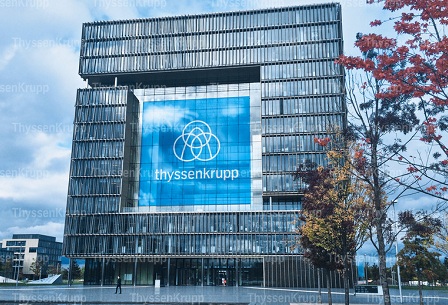SCM Minera Lumina Copper (Minera Lumina) is developing the Caserones copper and molybdenum deposit in Chile, which features six of the top ten biggest copper mines in the world.
Minera Lumina is 75% owned by Pan Pacific Copper (a joint venture between JX Nippon Mining & Metals and Mitsui Mining & Smelting) and 25% owned by Mitsui. The mine’s development is estimated to require an investment of $4.2bn.
Environmental approval for the project was received from the Environmental Committee of the Atacama in 2010. Construction of the mine began in 2010 and production of refined copper commenced in March 2013. Copper and molybdenum concentrates production is expected to commence later in 2014.
The copper-molybdenum mine is scheduled to produce 180,000t of copper and 3,000t of molybdenum for the first ten years. It is estimated to produce 3.54 million tonnes of copper and 87,000t of molybdenum during its mine life of 28 years. The project is expected to create approximately 5,000 construction and 1,500 operational jobs.
Caserones mine location, geology and reserves
El Teniente New Mine Level Project
The Caserones copper and molybdenum deposit in Chile features six of the top ten biggest copper mines in the world.
The Caserones copper mine (formerly known as Regalito mine, which was acquired by Pan Pacific Copper in March 2006) lies approximately 162km south-east of Copiapó in the Atacama region of Chile and approximately 15km from the border of Argentina. The mine is situated at an altitude of 4,200m to 4,600m above sea-level and comprises six mining concessions extended in an area of 4,258ha.
Caserones deposit is an Andean-type porphyry copper deposit located at the southern end of Maricunga District. The intrusions comprising of silicification with sericite are dominated by moderate to strong phyllic alteration. Mineralisation is associated with a cluster of monzogranites and dacitic porphyry intrusions along with associated hydrothermal-contact breccias.
The copper mine is estimated to contain mineral reserves of 1.04 billion tonnes of sulphides with an average copper grade of 0.34 percent and 126ppm of molybdenum.
Mining and processing of ore at the Caserones mine
Conventional load and haul mining method is applied at the open-pit copper mine. Ore is crushed in the primary gyratory crusher and transferred to a coarse mineral stockpile near the milling plant.
The available sulphide and oxide ore is processed through concentration and leaching.
The oxide and low-grade sulphide ore is transported to the dump leaching pad by trucks. The ore is leached with sulphuric acid resulting in a solution containing dissolved copper. Copper iron is selectively removed from the solution and copper electrodes are produced through solvent extractive electrolytic winning (SX-EW) process.
The sulphide ore will be treated in the concentrator plant resulting in copper and molybdenum concentrates.
The resulting concentrates and cathodes will be hauled by truck to the port for shipping.
Shipment of copper concentrates from the Caserones copper and molybdenum mine
Mar Camino and KORYU (completed in December 2013) carriers were engaged to export copper concentrates from Chile to Japan. They will also carry sulphuric acid from Japan to Chile for usage in the copper mine. Approximately 400,000t of copper concentrate is estimated to be transported annually from Chile to the smelters.
Construction of the copper-molybdenum mine
Construction of the production facilities began in March 2010. The major works include the civil engineering and building construction works, installation of equipment including the copper flotation processing plant, concentrator plant comprising of primary crusher, and milling and flotation circuits. The project also included the construction of roads, water pipelines and other facilities in the site.
Financing
The Caserones project is financed through a mix of senior debt facility and long-term debts provided by the Japanese government, commercial financial institutions and private banks.
“The Caserones project is financed through a mix of senior debt facility and long-term debts provided by the Japanese government, commercial financial institutions and private banks.”
Japan Bank for International Cooperation (JBIC) along with Bank of Tokyo-Mitsubishi, Mizuho Corporate Bank, Sumitomo Mitsui Banking Corporation and Hongkong and Shanghai Banking Corporation provided $1.1bn senior debt facility for the copper mine.
A consortium comprising of five private banks namely Bank of Tokyo-Mitsubishi UFJ, Mizuho Corporate Bank, Sumitomo Mitsui Banking Corporation, Chuo Mitsui Trust and Banking, and Sumitomo Trust & Banking provided $300m long-term loan for the project. Japan Oil, Gas and Metals National Corporation (JOGMEC) provided the liability guarantee for this loan.
Contractors involved with the mine’s development
The equipment supply and maintenance services contract for the Caserones mine was awarded to FLSmidth. The scope of the contract included the supply of primary crusher, cone crushers, SAG and ball mills, cyclones, flotation equipment and thickeners along with providing equipment maintenance services for five years.
Fluor was awarded the engineering, procurement and construction management services (EPCM) contract worth $1.3bn for the Caserones mine. The contractual scope included mine-related infrastructure including the copper flotation processing plant, facilities and utilities.
Siemens supplied three Simine Mill GD gearless mill drives and electrical equipment. The contract also included the supply of three 100MVA-transformers, 245kV gas-insulated switchgear (GIS), and the control and protection system for the entire substation.
ARCADIS performed engineering works for the tailings handling and deposition.








